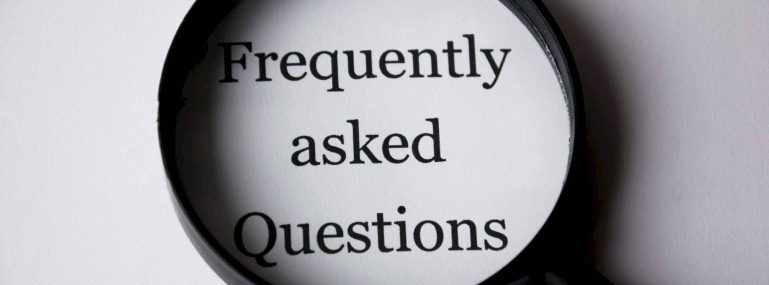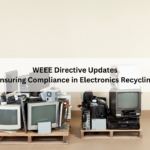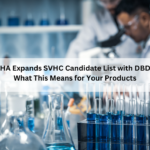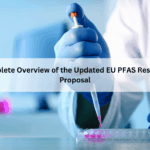EU Reach plays a vital role in keeping a check on the risks of hazardous materials that affect human health and the environment. We bring you a list of FAQ’s to help you stay updated on regulatory compliance and be compliant in all forms.
- 1. What is REACH?
REACH is a new European law regulating the use and production of chemical substances.
- 2. Who will pay for the risk assessment that has to be done in accordance with REACH?
Those who import or produce a new chemical must pay the costs for the testing of the chemical.
- 3. What are the implications of REACH for animal testing?
Animal testing will increase significantly due to all the chemical tests that have to be carried out. However, officials from the European Commission have stated that an increase in animal testing of almost four million more animals was not “ethically defensible” and that there are plans to reduce this high number by almost 70%.
- 4. How many chemicals will have to be registered?
Within the 11 years of implementation of REACH, approximately 30,000 chemicals have to be registered. Those being most hazardous or existent in the largest quantity will go first.
- 5. What are substances of very high concern (SVHCs)?
Substances that are one of the following:
- carcinogenic, mutagenic or toxic to reproduction (CMRs)
- persistent, bio-accumulative and toxic (PBTs)
- very persistent and bio-accumulative (vPvBs)
- seriously and / or irreversibly damaging the environment or human health, as substances damaging the hormone system
The general aim of REACH is to replace these potentially very hazardous substances by safer alternatives whenever possible.
If this is not possible, in exceptional cases hazardous substances can be authorized if the registrant can prove that
- an adequate risk control is guaranteed
- the benefits for the society or the economy are estimated higher than the potential risk
- no alternative substances are existent according to research results
Every such authorization is however limited in time in order to encourage research for an alternative substance. If the potentially hazardous substances are used for R&D purposes, exemptions can be granted.
- 6. What can REACH do if it finds a very hazardous substance whose use is very risky?
REACH has the power to ban either the chemical or even the entire product containing the chemical.
- 7. Will all products on the market be safe in the future?
No. The REACH regulation is valid only for chemical substances that are produced in or imported into the EU. It is – unless specific safety regulations apply – not valid for chemicals within a finished product. Thus, for imported products there is still no safety guarantee.
- 8. What are the concerns of the REACH regulation?
Animal protesters fear that the REACH regulation may lead to an increase in animal testing. Economists are concerned that the regulation might hamper global trade, as there is a possibility that international companies might consider moving away from Europe to avoid red tape and additional costs related to the regulation. According to the Commission animal testing will be reduced and no economic negative implications have to be feared.
- 9. Is the regulation valid for all chemicals?
No. Polymers, a group of chemicals which includes plastics, do not have to be registered at the moment, as there is currently no easy, cost-effective way to test them.
- 10. Is it possible to register chemicals online?
Yes. You will be able to download a free simplified version of the International Uniform Chemical Information Database (IUCLID 5.0), which is also available as a commercial version including the ORACLE management system. Companies also have the possibility to outsource the submission through IUCLID.
- 11. Do I need to register preparations I want to import into the EU?
Yes, if the preparation volume that you want to import equals or is bigger than 1 tonne per year.
- 12. What is the OSOR-principle?
This means that for every single substance a registration needs to be submitted (one substance – one registration).
- 13. Does REACH include food or cosmetics?
No, food is not an article, substance or preparation. Cosmetics were originally excluded from REACH, but in order to increase customer consumer confidence they were included afterwards. REACH is now supposed to function hand in hand with the Cosmetics Directive.
- 14. What are No-Longer Polymers?
These are substances that were considered as polymers under the EINECS regulation, but no longer fall into this category due to a change of definition of “polymer” in the directive 92/32/EEC. These now need to be registered in accordance with REACH. Normal polymers are exempted from being registered and evaluated. However, they may still be subject to authorisation or even restriction.
- 15. What happens if I don’t register?
Failure to register means that the substance must not be imported or manufactured within the EU.
- 16. What is a RIP?
A RIP is REACH Implementation Project, with 11 years’ project timeline till 2018.
- 17. What is the difference between a phase-in and a non phase-in substance?
A phase-in substance is a substance that has been listed in EINECS and/or manufactured in the EC, but never actually been placed on the market during the last 15 years. No-longer polymers are also phase-in substances.
A non phase-in substance is a completely new substance that has neither been used nor registered in the market before the entry of force of REACH.
Any non phase-in substance must be registered before it can be used in a manufacturing process.
- 18. What is a Chemical Safety Assessment?
A chemical safety assessment (CSA) is a part of the registration dossier that must be prepared, if the import of a substance is bigger than 10 tonnes a year. It should list the hazards of the substances and assess their risks.
The Chemical Safety Report (CSR) completes the risk assessment by stating how the risks are adequately controlled.
The risk assessment needs to be performed for all different exposure scenarios, that is: for all ways in which the substance is manufactured or used, including the different ways of control the manufacturers or importers exert in the process.
The manufacturer or importer communicates all such exposure scenarios to the downstream users in the safety data sheet (SDS).
The downstream users should then assure themselves that their particular use of the substance is covered by the exposure scenarios identified. If not already covered, the downstream users can identify their use to the manufacturer/importer, and the manufacturer/importer can then choose to include this use in the CSA.
If a downstream user chooses not to reveal their use of a particular substance to the importer or manufacturer, then they must prepare their own CSA.
- 19. When do I have to prepare an SDS?
If a substance or preparation is considered hazardous in accordance with Directive 67/548/EEC or 1999/45/EC or if the substance is a PBT or a vPvB, the supplier must prepare a SDS (safety data sheet). The preparation of such an SDS is independent of the amount of the substance.
- 20. Can a registration be submitted as a joint registration with similar organisations / companies?
Yes, if you and another registrant want to register the same substance, you can submit the information on the substance and on its classification together.
The CSR can also be submitted jointly. The information must be submitted by one main registrant on behalf of the others.
The other registrants need to submit information on their company details, production volumes etc. individually.
Manufacturers and importers have the possibility to opt out of joint registration arrangements if this would mean excessive cost for them, if they disagree with the lead registrant on the data to be submitted or if a loss of confidential information would cause severe commercial damage.
- 21. What if I produce or import articles?
Then you need to register for all substances contained in an article, if both of the following is true:
- You plan to produce / import the substance in the article in quantities of more than 1 tonne per year
- The conditions of use of the substance are normal or foreseeable
In case you are dealing with chemicals already considered hazardous – like CMRs, PBTs or vPvBs – then you will have to register the substance, if both of the following holds true for you:
- You plan to produce / import the substance in the article in quantities of more than 1 tonne per year
- The substance is present in the article above a concentration of 0.1% w/w
You need to inform the ECHA about the following:
- Identity of producer/importer
- Registration number
- Identity of substance
- Classification of substance
- Brief description of uses of the article
- Tonnage range
- 22. Do metals count as chemical substances?
Yes, they do and thus they need to be registered. However, minerals and ores are exempted from registration unless they are chemically modified.
- 23. How about property rights for the reports submitted for Registration ?
The registration rights belong to you for 10 years. After that period the data will be made available for all other registrants.
Questions about preparation and pre-registration
- 24. How do I need to prepare for REACH?
- Make a list of all your substances, be they in a preparation or on their own. Don’t forget to include the following:
- Details on substance name
- EINECS, CAS or ELINCS numbers
- Hazard classification and labelling
- Percentage of the substance in a preparation
- Use of the substance
- Estimate future tonnage levels per year by looking at the current tonnage levels
- Identify your role for dealing with each substance, i.e. state if you are the manufacturer, importer, downstream user, distributor etc.
- Check whether there are any information gaps and if so, identify them
- Identify potential substances of high concern
- Check what the downstream users use the chemical for in the end product
- Check how you yourself use chemicals supplied by a manufacturer or importer
- Choose an apt contact person for REACH in your organisation, who will then be in charge of the communication with both suppliers and customers
- Contact your suppliers to inform them about REACH and to familiarize them with the regulation
- 25. I have heard about a pre-registration for phase-in substances. What exactly does that mean?
Pre-registration is a system for the registration of phase-in substances, i.e. the substances which have already been in the EU, but have not entered the commercial market yet and have not been tested for safety either.
During the time of pre-registration, potential registrants must submit certain information to the ECHA, including information on the identity of the substance, the potential registrant and the envisaged deadline for registration.
From this, a Substance Information Exchange Forum (SIEF) will be created for potential registrants of the same substance. The aim of this forum is enabling those registrants to share data on exposure assessment tests.
- 26. What information do I need to give for the pre-registration?
- name of the substance
- name and address of registrant
- name of contact person
- name and address of representative where appropriate
- the anticipated deadline for the registration
- 27. Which substances need to be pre-registered?
- substances manufactured and/or imported on their own
- substances in imported preparations
- substances in articles (if more than 1 tonne of this substance is imported per year and given that the substance shall be released under normal or reasonably foreseeable conditions of use)
- no-longer polymers as well as substances in polymers like additives under some conditions
- monomers
- on-site as well as transported isolated intermediates
- substances which have been synthesized at least once in the 15 years before the entry into force of REACH, but not placed on the market yet
- 28. Do I need to pre-register preparations?
Yes, you need to pre-register preparations of phase-in substances and register the preparation substances, if the volume of the substance in the preparation is more than 1 tonne per year.
- 29. What is SIEF?
SIEF is the abbreviation for Substance Information Exchange Forum. This Forum was created to share data and costs between the different registrants as well as to reduce animal testing by data share.
Abbreviations and specific terms
- Article: an object which after production has a particular shape, surface or design which determines its function more than its chemical composition
- CAS number: Chemicals Abstracts Service number of a chemical
- Downstream user (DU): any person within the EC that is neither manufacturer nor importer of a product, but nevertheless uses a chemical substance in their industrial or professional activities. A distributor or the consumers themselves are not considered as downstream users
- EINECS: the European Inventory of Existing Commercial Chemical Substances lists all chemical substances commercially available in the EU from 1971 until 1981
- ELINICS: the European List of Notified Chemical Substances lists all substances which have been notified in the EU after 1981 in accordance with Directive 67/548/EEC, that is the Directive on the classification, packaging and labelling of dangerous substances
- Intermediate: a substance manufactured and then consumed in the manufacturing process or a substance that in that process gets transformed into another substance through chemical reaction
- Preparation: a solution composed of two or more substances
- Substance: a chemical element and its compounds in the natural state or procured by a manufacturing process. This includes all additives necessary to preserve the element’s stability and all impurities caused in the production process. It excludes all solvents that can be separated from the element without changing its stability or composition
Connect with our compliance specialists at [email protected], to learn more about Material Compliance and Supply Chain Sustainability





